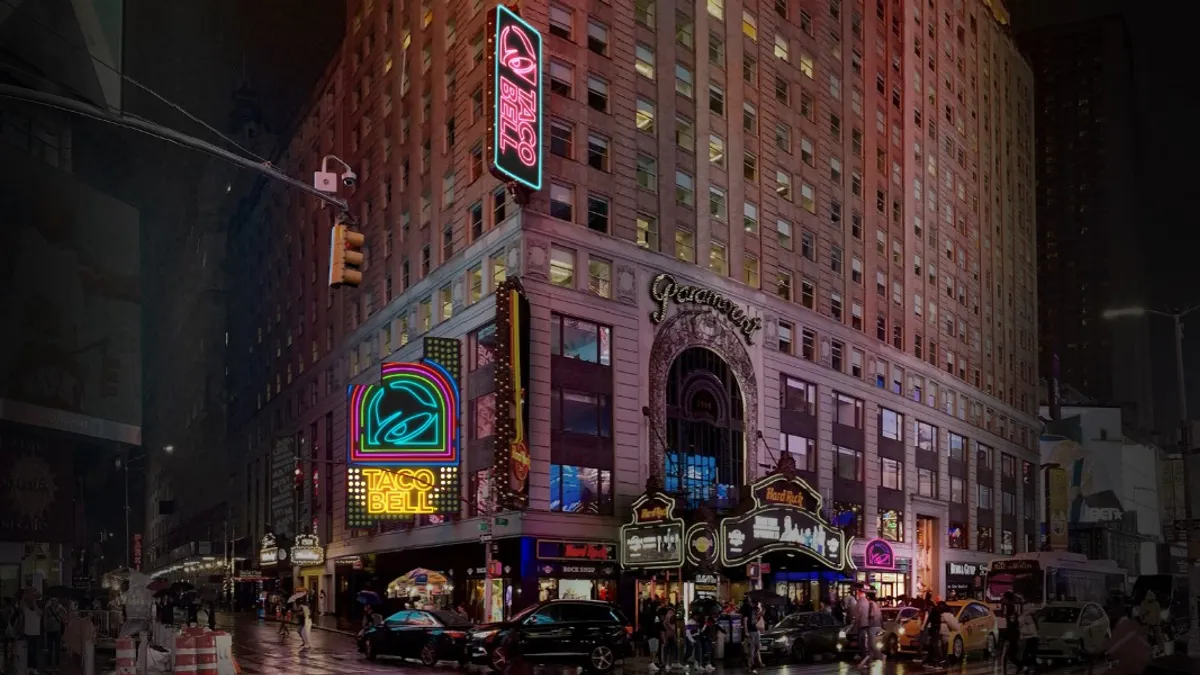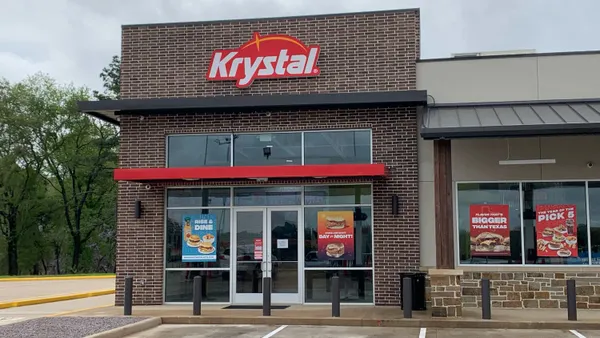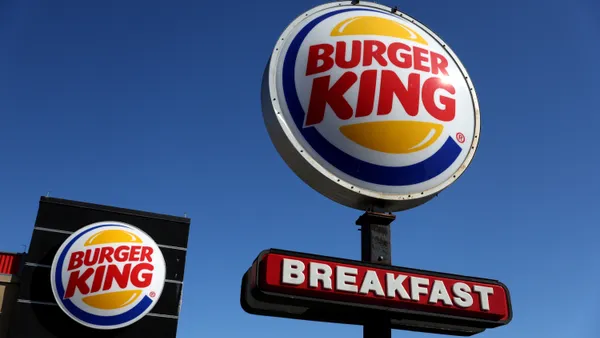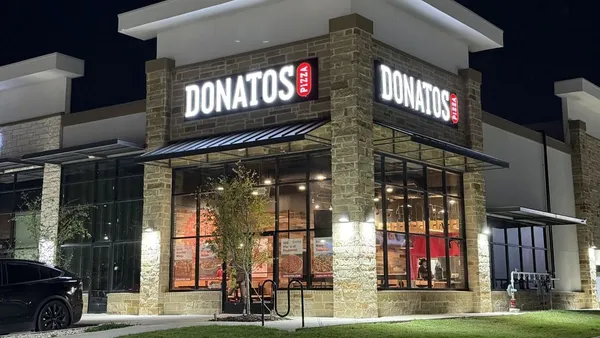UPDATE: March 6, 2020: This article has been updated to include statements from Taco Bell.
Dive Brief:
- Taco Bell will convert three traditional suburban Taco Bells to its Cantina format as part of a test, according to a company release emailed to Restaurant Dive Wednesday. The chain will evaluate the stores' performance during the pilot "and begin to apply the successes across [its] 7,000 restaurants," according to the release.
- Taco Bell is also building a Cantina in Times Square, which will open in fall 2020, and a gaming-themed Cantina which will open around the same time in San Ramon, California.
- The chain has opened more than 30 Cantina stores in U.S. urban markets since launching the concept in 2015.
Dive Insight:
This store-conversion strategy falls in line with Taco Bell's plan to add 1,000 restaurants, including 300 urban-inline formats and Cantina stores, in the next two years. A Taco Bell representative told Restaurant Dive in an email that the three stores were selected because they're in markets with a good urban and suburban mix, and that each store will be completely remodeled to delivery the full Cantina customer journey. This will include communal tables, shareable appetizers, open kitchens, self-order kiosks and alcohol.
Cantinas have succeeded in major cities — Taco Bell's original Cantina in Las Vegas is is busiest restaurant in the world — and the chain has its focus trained on New York City, but the suburban market has been largely untested. In 2018, the chain planned to add 125 restaurants to the market.
The stumbling block of alcohol regulations could prove to be a headache for Taco Bell if it continues to convert existing stores to the Cantina model — especially if customers have come to associate the format with booze. Two years ago, city leaders of Royal Oak, a Detroit suburb, denied Taco Bell's liquor license application, for example.
Still, the Cantina's format's special menu and tech-focused format, featuring self-order kiosks and an open kitchen, may be enough to entice more diners than the traditional store styles were attracting. Taco Bell also has plans for more specialized Cantinas. Guests will be able to play video games at the San Ramon, California Cantina, and Mike Grams, president and global chief operating officer, told CNBC that a Cantina could serve a 100% plant-based menu. While Taco Bell's standard urban-inline restaurants have the same design as Cantinas, they do not serve alcohol, according to a Taco Bell spokesperson. Of the chain's 60 urban-inline locations, more than half are Cantinas, which do serve alcohol.
Cantinas have been a bright spot for Yum Brands' most successful chain, and these expansion plans suggest confidence in the concept as a stronger revenue driver. The elevated experience is also a powerful way to differentiate from other major QSRs, especially as diner appetite for experiential eating grows. The Cantina overhaul will better maximize its in-store space, though drive-thru drives more than 70% of its business, according to the release.
"We see this new wave of development less of standard Taco Bell restaurants vs. Cantinas. It's an evolution," the spokesperson said. "The great thing about Cantinas is that their flexible formats open up new places for Taco Bell to grow in. ... We are excited about the progress and performance we've seen from Cantinas and look forward to rolling out a new fleet in the coming years."
Correction: In a previous version of this article, the operations of Taco Bell's urban-inline Cantinas were misstated. Urban-inline Cantina formats serve alcohol.














